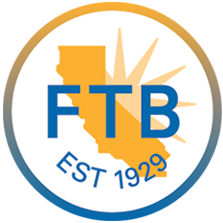
Real estate investors often look for strategies to defer taxes and maximize returns. One of the most powerful tools in their arsenal is the 1031 exchange, a provision under the Internal Revenue Code that allows investors to defer capital gains taxes when swapping one investment property for another. While 1031 exchanges are governed at the federal level, California’s rules for 1031 exchanges include unique state-specific nuances that investors must understand.
What Is a 1031 Exchange?
A 1031 exchange, named after Section 1031 of the IRS Code, allows investors to defer paying capital gains taxes when they sell an investment property and reinvest the proceeds into a “like-kind” property. This mechanism enables continued investment growth without an immediate tax burden.
Here are some basic rules to keep in mind when considering a 1031 exchange:
- This tax break is only applicable to real estate used for business or investment purposes. Personal homes or properties held for quick resale don’t qualify.
- You must identify a new property within 45 days of selling the old one and complete the exchange within 180 days. These tight deadlines are why it is advisable to involve a qualified intermediary.
- The replacement property must be of equal or greater value than the one you’re selling./li>
Why Use a Qualified Intermediary?
A qualified intermediary holds the proceeds from the sale of your property in escrow and ensures they go directly into the purchase of your replacement property. You can’t touch that money — doing so would disqualify the exchange. An intermediary acts as a safeguard to ensure the transaction follows IRS guidelines, reducing the risk of mistakes that could lead to a big, unexpected tax bill.
California’s Special Rules for 1031 Exchanges
While 1031 exchanges follow federal tax guidelines, California has its own rules, particularly if you’re leaving the state. If you exchange property in California for property in another state, California still wants to know about it. This requirement catches many investors off guard.
Suppose you sell property in California and exchange it for a like-kind property outside the state. In that case, California requires you to file an annual information return — Form FTB 3840, California Like-Kind Exchanges. This form tracks the deferred capital gain from your California property. Essentially, the state wants to ensure that when you eventually sell the new property, it gets its share of the taxes.
Many people fail to realize that you must file this form every year until you sell the replacement property, even if you’re no longer a California resident, and failing to file can result in costly penalties.
Conclusion
California’s rules for 1031 exchanges can be advantageous for real estate investors. It allows them to defer taxes and continue growing their portfolios. But don’t overlook the state’s reporting rules if you’re selling property in California and buying elsewhere.
To avoid unexpected tax bills down the road, make sure you stay compliant by filing Form 3840 annually, even if you no longer live or invest in California. And, as always, it’s worth seeking professional guidance to ensure the process goes smoothly.
At The Ray Group, we help you navigate the complexities associated with like-kind exchanges. Contact us today for tax insights and advice about your like-kind property investments.
You may also enjoy reading: New Court Ruling May Impact Buy-Sell Agreements in Estate Plans







